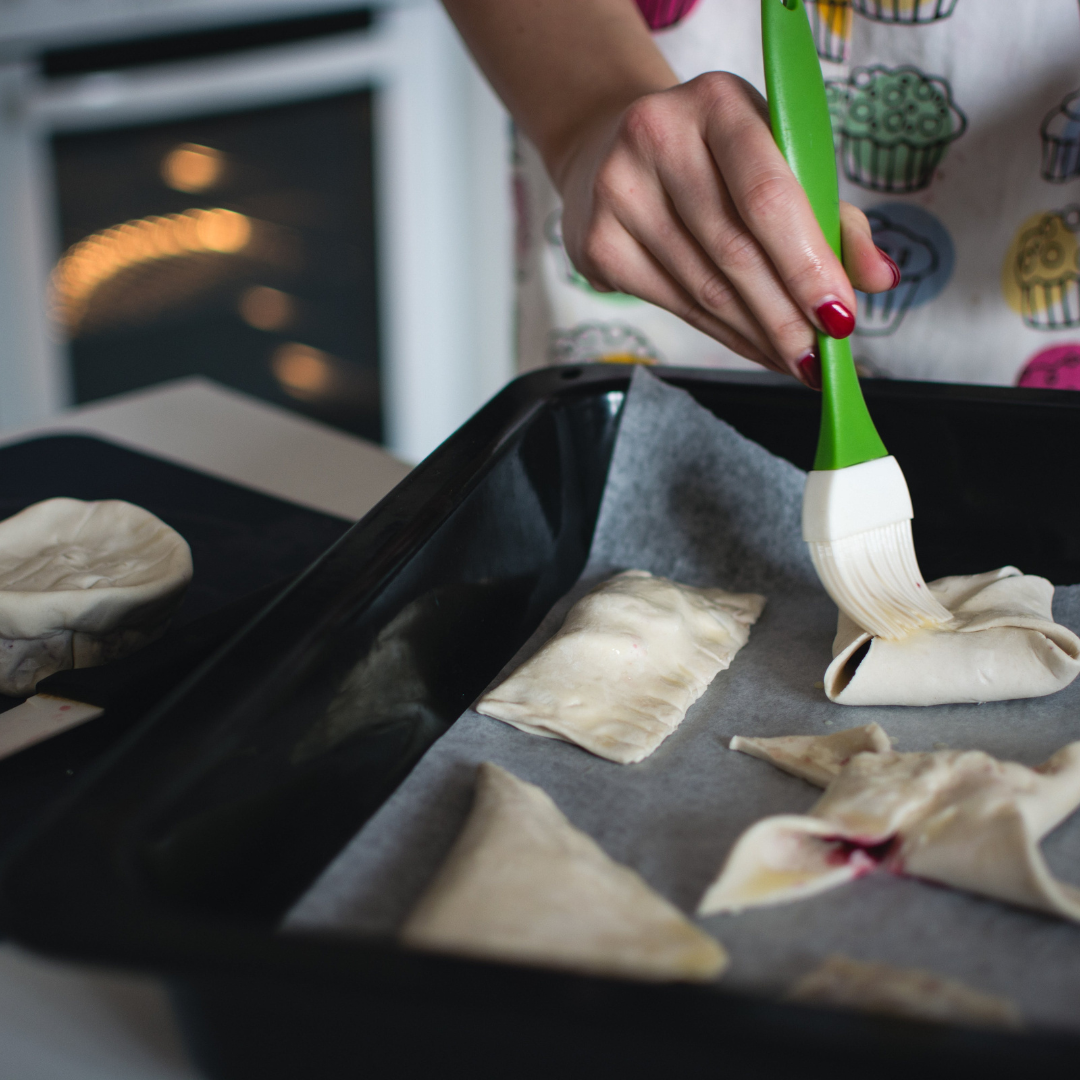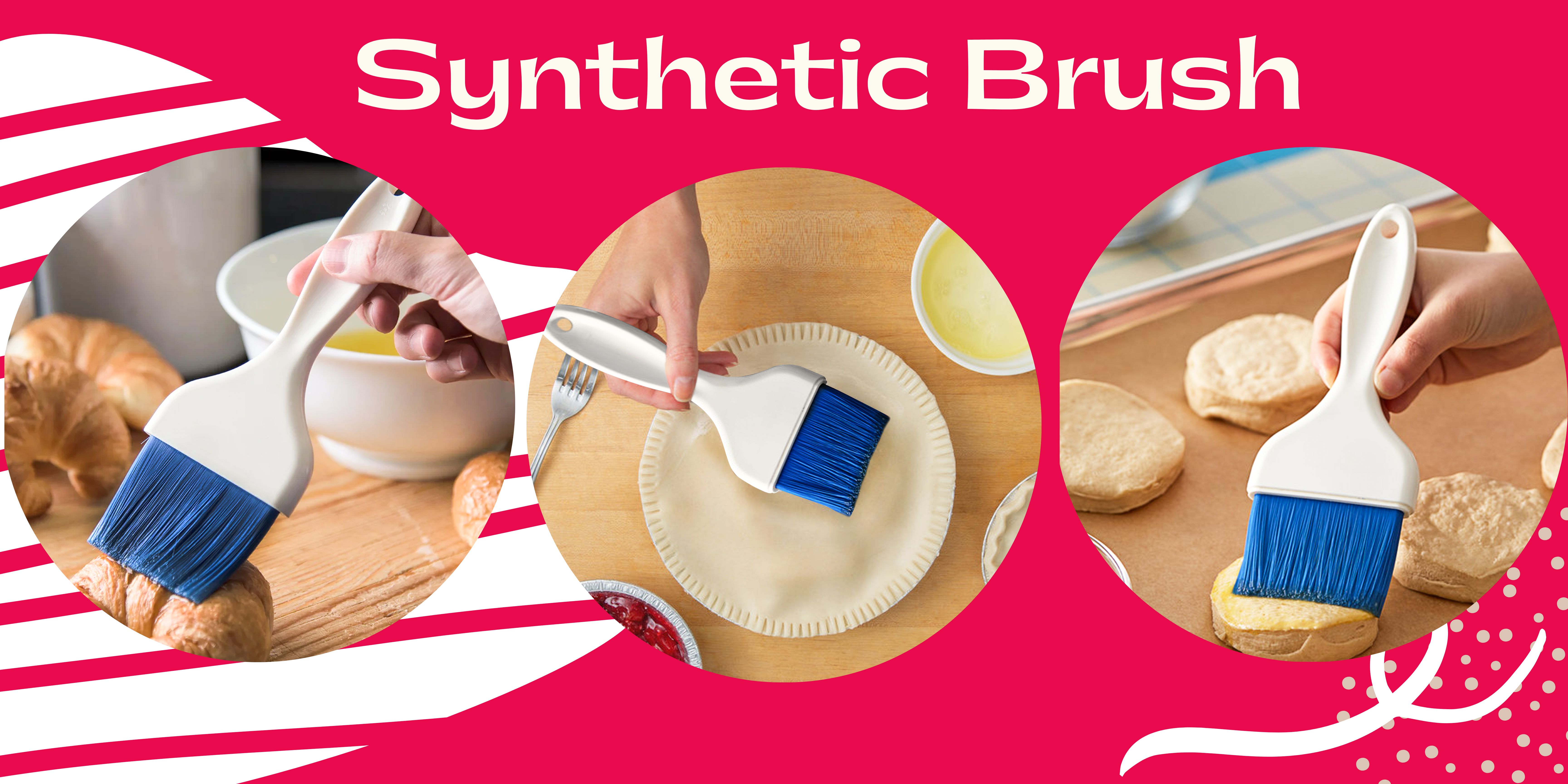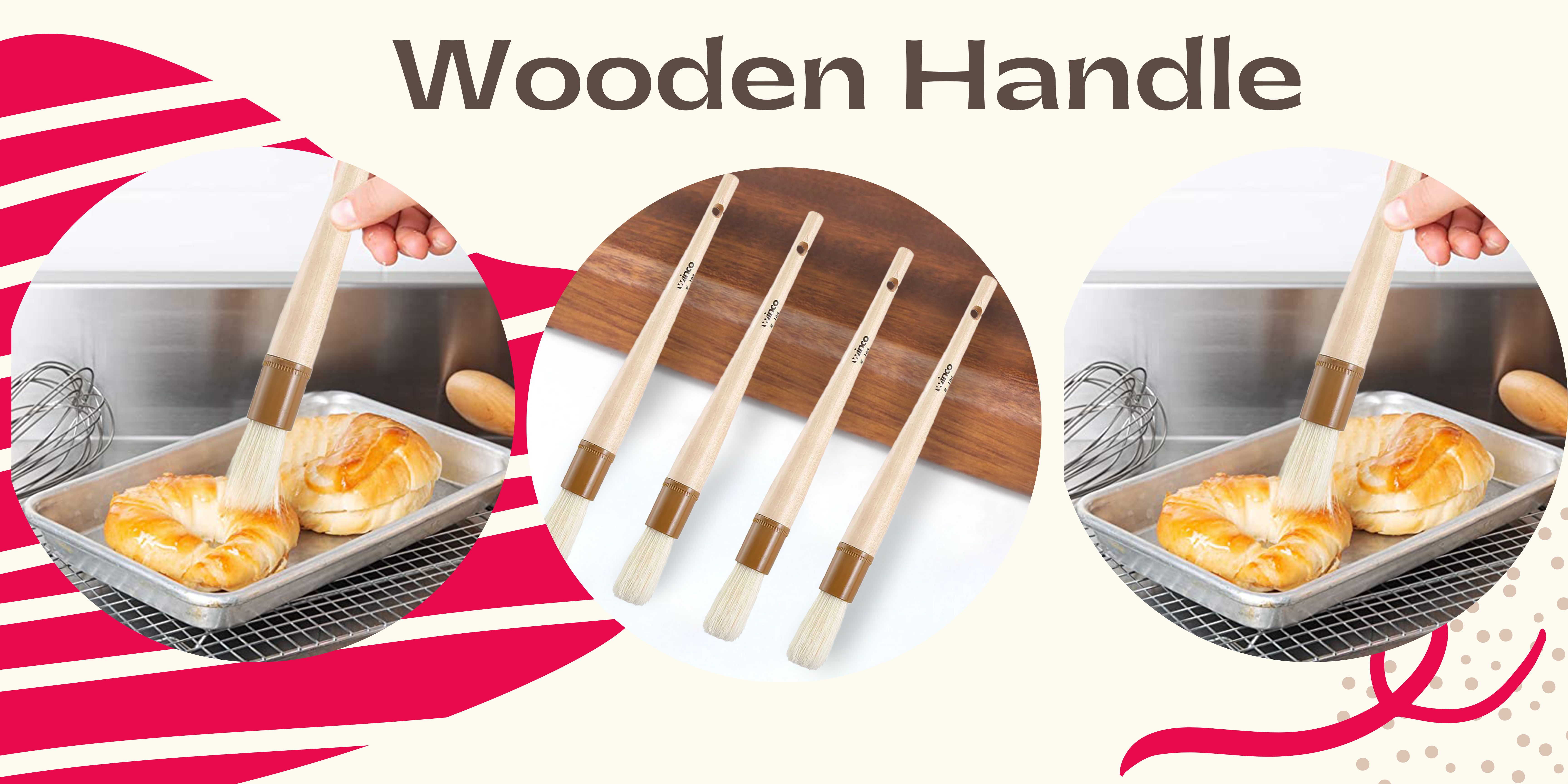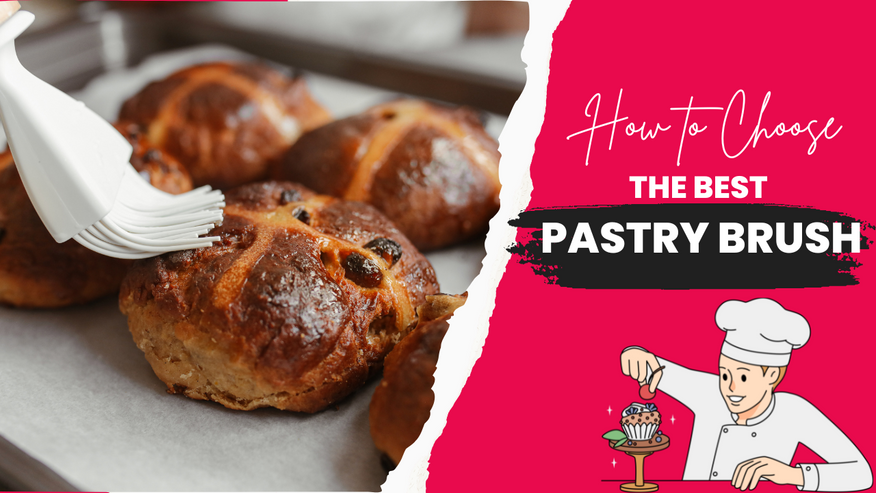Oct 27th 2022 - Monica Cunanan
How to Choose the Best Pastry Brushes
cA pastry brush is essential for perfect baked goods. Baking experts understand that the key to making a perfect golden brown crust is using an egg-washing technique. For delicate pastries to look appetizing, the color and their glossy finish are achieved by sealing the edges using a pastry brush. Brush for pastry is useful for both pastry chefs and home cooks alike.
So What is a Pastry Brush?

Pastry brushes are useful for applying different liquid ingredients. You can easily apply sauces, oil, or glazes to foods before and during the baking process. Basting brushes give you better control over the ingredients you add. It also makes it easier to spread an even layer for a consistent product by using a spray bottle.
What are The Uses of Pastry Brush?

To get a well-browned crust on bread, use an egg wash or melted fat (butter) on the dough before baking. When greasing a pan, a pastry brush can be helpful. You can use a brush to remove any extra salt from your dish if you've used too much. Pastry brushes come in handy for lots of different things in your kitchen.
Pastry Brush vs Basting Brush: The Difference
Don't be fooled by the name; a pastry brush is also called a basting brush. Both pasty brushes and baste brushes are designed to spread the sauce and glaze more efficiently over foods. However, it is important that they be used appropriately. If you use the same paintbrushes for both pastries and meats, they could inadvertently get contaminated by each other.
Shapes & Sizes of Pastry Brushes
Do you want to know which type of baking brush is the best for use in your kitchen? Your choice of brush depends on which task it's best used for in your kitchen. Small bristle paintbrushes can be used for a variety of different tasks, including sealing the edges of dumplings, ravioli, or turnover doughs, and even applying paint to walls. To figure out which brush sizes you need, think about the different shapes and sizes of brushes.
- Small Brushes: Works well for smaller items or for tasks that need more attention and precision.
- Large Brushes: Great for holding a large volume of liquids and spreading them across large surfaces.
- Wide Brushes: Great for covering a large number of products
- Round Brushes: Best for small pastries, more detailed decorating tasks, or plate decorations
- Hook Brushes: They can be used for hanging or placed along the edge of your plates for cleaning.
- Angled Brushes: With tapered bristles for detailed, precise strokes
Types of Pastry Brush Bristles

Depending on the type of bristles your cooking brushes have, they may be useful for different purposes.
- Sturdy bristles are best for tough products while softer bristles are best for delicate foods.
- Bristle brushes with tighter bristles pack a higher volume of liquid ingredients than loose bristled ones.
- Loose bristled brushes are easier to clean than tight bristled ones.
- When it comes to colors, some kitchen staffs use a dark color for safety reasons, so they can easily spot any bristles that fall into their bowls.
- Those that retain their shape and rigidity for long periods of time will last longer than others, so you can enjoy them for longer.
Bristle Material
Aside from texture, be sure to check out the bristle material. Each material type has its own advantages: Synthetic materials are durable, easy to care for, and last longer than natural fibers; however, natural bristles hold more liquid than synthetic bristles. Here are common bristle materials you can choose from:
Boar Bristles
Natural brushes with soft textured brushes are great for spreading thin liquids like oils or marinade. They have a waterproof design that keeps oil from seeping into pores.
Advantages:
Holds more liquid ingredients than synthetic bristles

Model Featured: Winco WBR-25 Pastry Brush
Nylon Brushes
Bristle brushes are ideal for spreading thick liquid products without the risk of bristles coming off.

Advantages:
- Retains a high amount of liquid
- Low risk of bristles coming off
Model Featured: Carlisle 4039214
Silicone Pastry Brush
Bristle brushes are ideal for spreading thick sauce and are great for cooking at high temperatures.
Advantages:
- Designed for use in high-temperature environments
- Easier to clean than natural hair
Teflon Bristles
Bristle brushes imitate boar hair but are not as delicate.
Advantages:
- Made for use up to 500°F (260°C)
- Best for spreading thin liquid foods like oils or marinade

Model Featured: Carlisle 4011400
Pastry Brush Handles
Your brush's handle can also make a big impact. If you're working on hot products, your employees are safer if they use brushes with longer handles. If you're working on intricate pastry designs, having a shorter handle makes it easier for your team to control the dough. Furthermore, the material can be equally important. Wood or plastic handle pastry brush usually comes with either a wood or plastic handle.
Wooden Handles

- Strong enough to hold onto
- Easy to use
- Stylish for front-of-house use
Model Featured: Winco WFB-10R Pastry/Basting Brush
Plastic Handles
- Easier to clean
- Tough for strong tasks
- Lasting for long-term use
How to Properly Clean a Pastry Brush

- Step 1: Wash the brushes right away after using them. If your kitchen is so busy that you don't have time to clean it, at least soak it for a few minutes in hot water before cleaning it.
- Step 2: Under hot water, rinse out the bristles thoroughly with dish soap or soapy water. Oil removal is important because it prevents the brush from becoming rancid, which makes it unsuitable for use.
- Step 3: Make sure there isn't any leftover batter or dough stuck at the bottom of the bowl when you're done mixing.
- Step 4: Wash the brush and then disinfect it.
- Step 5: Let it air dry.
Replacing Your Pastry Brush
If you're shedding bristles, especially if you use an animal hair food bristle, then you probably need a new one. Serving food with loose bristles in them wouldn't be great and it can be dangerous for your restaurant. Melted, torn, ripped, stained, or otherwise damaged pastry brushes, will hinder your ability to use them properly.
How to Check if You need to Change Your Pastry Brush
- Make sure the bristles are evenly distributed and lay flat for the best results.
- Brushes used for cleaning pots and pans can get dirty over time. This happens because oil from the bristles breaks down and decomposes, resulting in an unpleasant smell and flavor that can be transferred to foods.
How to Maintain Your Pastry Brush
It's easy to clean and maintain your brushes, and doing so will help prevent food-borne illness. Plastic brushes are easier to clean than wooden ones. Wooden brushes need to be cleaned thoroughly by hand to keep them clean.
Some bristles made from animal hair need to be washed by hand, whereas others are dishwasher safe. If you choose to use a dishwashing machine, be sure to put them securely into the machine so they don't get damaged, and remove and air them as soon as possible to avoid rusting if your brush has any metallic parts.

